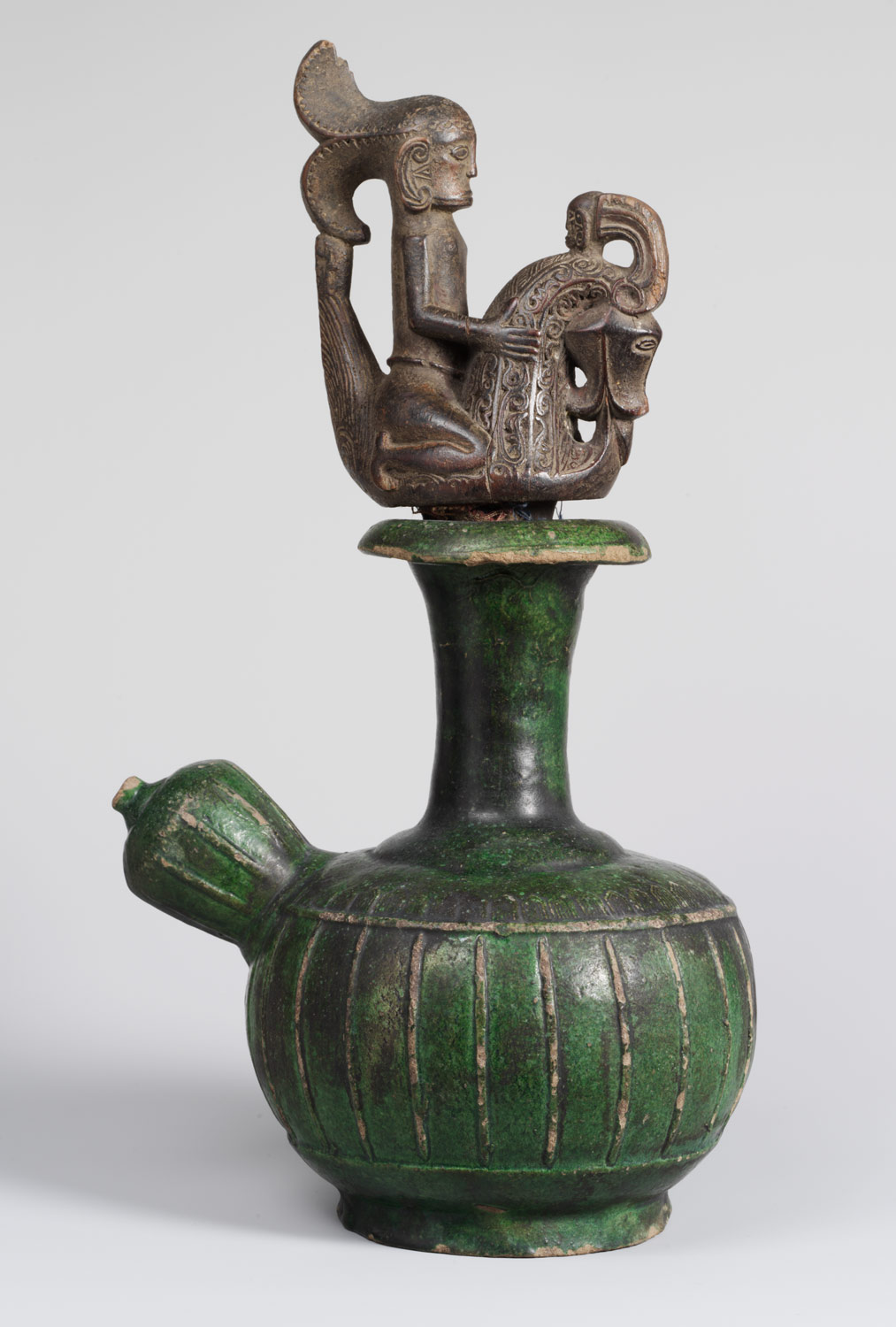from: www.metmuseum.org Container for magical substances (guri guri), 19th–early 20th century
Container for magical substances (guri guri), 19th–early 20th century
Indonesia, Sumatra, Toba Batak people
Wood, Chinese porcelain; H. 13 1/2 in. (34.3 cm)
Gift of Fred and Rita Richman, 1988 (1988.124.2a,b)
Container for magical substances (guri guri), 19th–early 20th century
Indonesia, Sumatra, Toba Batak people
Wood, Chinese porcelain; H. 13 1/2 in. (34.3 cm)
Gift of Fred and Rita Richman, 1988 (1988.124.2a,b)
Prior to the widespread adoption of Christianity in the early twentieth century, magic formed an important element of Batak religious practice. Religious specialists, known as datu, performed both benign and malevolent magic using a variety of ritual paraphernalia. The most sacred and powerful of the datu's objects was the potion container, or guri guri. These containers held pupuk, a powerful substance made from a ritually executed human victim. Pupuk, it was believed, could force the victim's spirit to do the datu's bidding.
The containers themselves were often imported Chinese ceramics, but the Batak carved elaborate wooden stoppers to seal the mouths of the vessels. Many stoppers, such as this example, depict human figures riding horselike creatures called singa. Combining aspects of horses, snakes, lions, and other animals, singa are mythical creatures associated with fertility and supernatural protection.
Wednesday, June 6, 2007
Guri guri
Posted by
Lefidus Malau
at
9:24 AM
![]()
Subscribe to:
Post Comments (Atom)
No comments:
Post a Comment